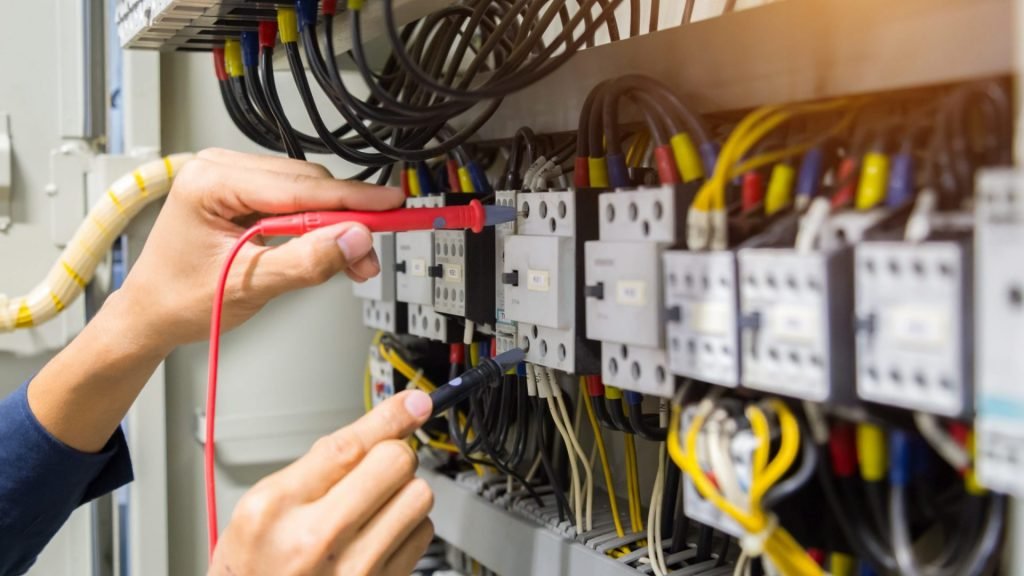When installing or maintaining a new home electrical service, it is important to understand what the service requirements are. There are several different types of electrical service, each with different requirements. These may include volts, amperage, and grounding. A professional electrician can help you understand what is involved. The following article will go over some of the most common electrical service requirements. Using these guidelines as a guide, you can make sure that the work is done correctly.
Basics Of Electrical Service
There are many elements involved in providing electrical service to a home. The first is the meter, which tracks how much electricity is used. This meter is connected to the main service panelboard, also called the breaker box. In a breaker box, two large wires are connected to screw terminals known as “lugs.” There is also a neutral lug. Electricity travels from the breaker box through the home’s electrical system, then is directed to outlets, lights, and other hard-wired appliances.
Electricity in a home is provided by alternating current, or AC. The voltage in an AC circuit is constantly changing from zero to maximum. The generating plant sets this maximum voltage. The voltage in a home is generally below that of a commercial or industrial building.
Types
There are three basic types of electrical services available to home and business owners. The first type, 120V, is the most common and is used for small loads. The second type, 240V, is used for larger loads. A service can also have both types of voltage. Each of the three types differs in the amount of power they provide.
In the U.S., a standard household requires about 120 volts of electricity. A residential electrical service may have either 120 or 240 volts, depending on the size of the home. The higher the voltage, the more electrical appliances the home can support. The voltages of the electrical service will also depend on the type of appliances that you intend to use. In most homes, 120 volts will be sufficient for small appliances. However, a home that needs to run a dishwasher may require a higher capacity. A home that is over 1600 square feet may need a 200 amp service.
Amperage
An electrical service’s amperage is a very important factor to consider when inspecting a property. The service amperage varies depending on the age of the house and the last rewiring. Older homes may only have 60 Amps of service, while more recent homes can have up to 200 Amps. Very large houses may even have 400 Amps of service. The increase in amperage has kept pace with the number of electrical appliances being installed in homes.
The electrical service’s amperage capacity is determined by complex calculations based on square footage, the number of appliances, and the type of heating. An electrical contractor can help determine the correct electrical capacity for your home. They can upgrade your existing panel or replace individual circuits to provide higher-capacity service. In addition, they can install new outlets and air conditioners.
Grounding
Grounding an electrical service is an important way to keep your electric equipment safe. Electricity is always looking for a direct route to the earth, so grounding your electrical system will ensure that the current stays in its proper place. This also prevents power surges. Grounding electrical systems can also protect your appliances from damage caused by high voltages.
To ground electrical service equipment, you must bond the two pieces together using a bonding jumper. This is a reliable conductor that creates the required electrical conductivity between metal parts. This jumper connects a grounded service conductor to the supply-side grounded circuit conductor.
Meters
Meters for electrical service are used to record the energy consumption of residential and commercial customers. They also determine demand. Demand refers to the amount of energy that a consumer uses over a certain interval of time. Some meters can record electricity usage in a “time of day” mode, which records usage at peak high-cost times and during low-cost periods. Some meters also have relays that enable demand response load shedding.
There are many different types of meters for electrical service. Some measure the amount of current, while others measure the duration of the charge. Ampere-hour meters are best suited to constant load applications, while some measure the voltage and current.
Permits
Most electrical work, including installing new electrical systems or repairing an existing one, requires a permit. The Department of Buildings’ Electrical Unit issues these permits. To get one, you must be a licensed electrician or use a licensed electrical contractor. Permits are required to install electrical wiring, change appliances, or relocate wiring.
In many cities, you need a permit to perform major electrical work, such as installing new electrical wiring or upgrading your electrical system. If you do not obtain a permit, you may be without insurance coverage and/or be subject to fines. You should always hire a licensed electrician to perform electrical work, as it is extremely dangerous.
Troubleshooting
When you need to troubleshoot electrical problems, you need to know what to look for and how to resolve them. Sometimes an electrical problem is a minor one, but sometimes it can lead to bigger problems. No matter the situation, it’s important to be prepared and ready to tackle any problem head-on. Troubleshooting electrical service is a challenging and rewarding task. To begin, you should identify the source of the problem.
In some cases, a tripped breaker is a sign of a system overload. In this case, you may need to re-evaluate the electrical usage in your home and invest in a new electrical panel. Alternatively, you might simply have too many electronic devices on one circuit. In that case, unplugging them might help. If this doesn’t solve the problem, call Safe and Sound Electric for electrical service and troubleshooting.
Also Read: https://techtablepro.com/what-is-trash-hauling/

